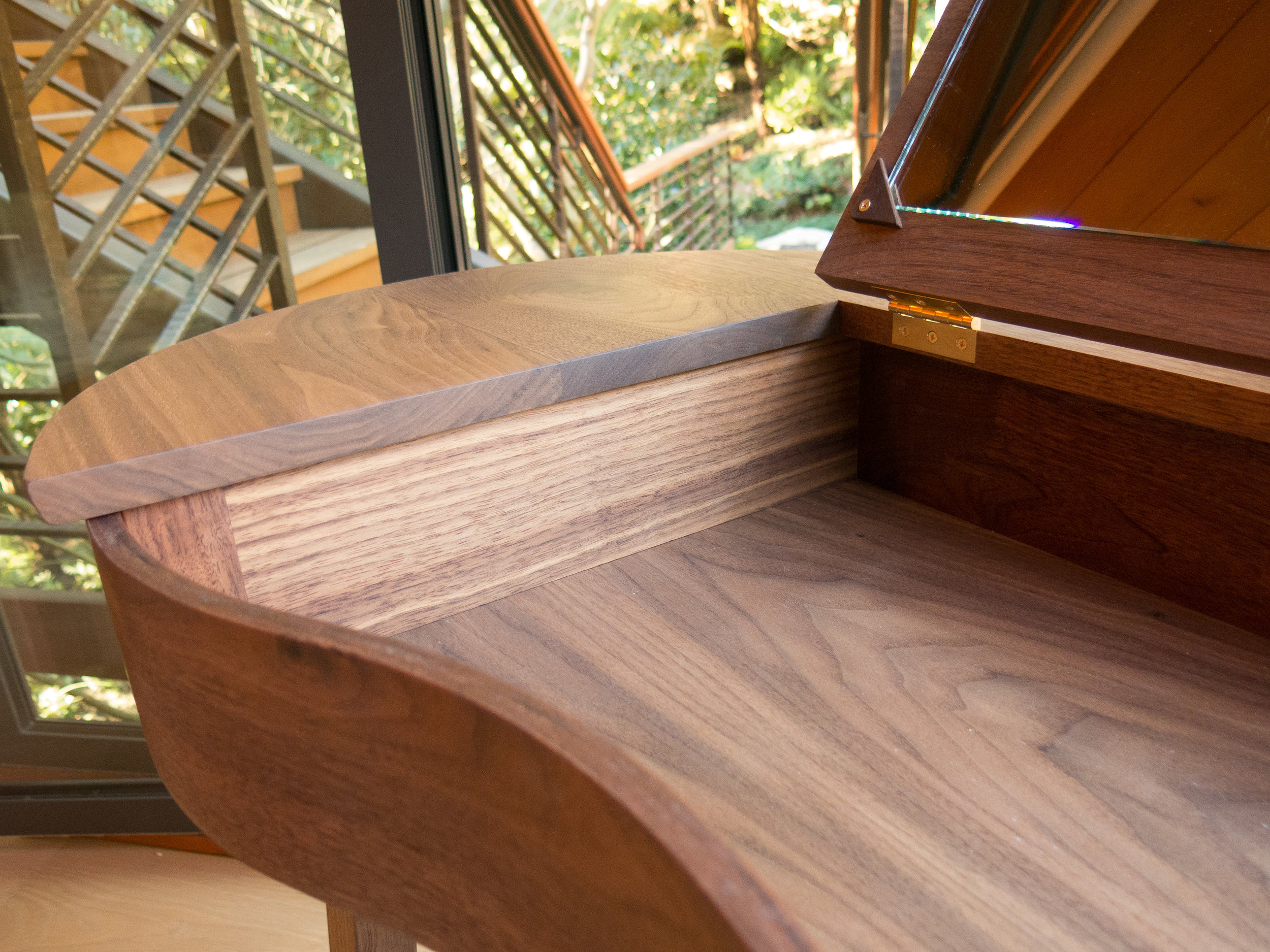The Bean
The Bean is a perfect example of a complex project that was worth the wait.
The conversation started early in the year and it was clear from the beginning that pulling off a kidney bean shape was essential. To make a long story short, substantial curves in wood are tricky and we knew the Bean was going to be a fun challenge. There are a number of different ways to handle curved pieces, but most involve plywoods and veneers, and that’s not our thing. (If you’re interested in more about how the piece was made, head over to Behind the Scenes).
The design prompt for The Bean was to create a vanity desk that handle all the responsibilities for make-up: integrated mirror, storage for all the supplies, and plenty of desk-top real estate. After years of using an older desk, the client knew exactly the size, shape, and requirements for the new upgrade. Given all those specifics, we experimented with a few different base options and then got to work building out the framework, hammering out the details as the piece came together.
Altogether It took about a year from initial conversation to delivery, but having an extended schedule allowed us to experiment, test, get feedback, and ultimately deliver a piece that was exactly what the client wanted. That’s always worth the wait.
Project Specs
Scope of work: Design, fabrication
Completion date: 2/18
Materials: Walnut, brass, glass, leather
Dimensions: 40" H, 30" L, 23" W
Process
Curves makes any project more complex. There’s a number of reasons why, but it mostly boils down to equipment and the nature of wood.
All the machinery in a modern wood shop is designed to handle linear pieces of wood. There are plenty of ways to adapt machinery so that it can accept curves, but those adaptations require lots of customized supports. Instead of just making parts for a desk, you must first build the supports to allow you to make the parts. It’s effectively double the work.
Trees grow *relatively* straight, and thus processed lumber is available in straight segments. Given this reality, there are a couple different ways to make curved pieces from straight stock. Without going down a rabbit hole, I’ll summarize by saying bent-laminations is my preferred method because:
It allows me to build out of solid wood
There are no veneers to deal with
It’s the most structurally stable
The Bean doesn’t just have some curves, it’s only curves. In fact it has both convex and concave curves, which translates into lots of templates, forms, jigs, and tests. Heres’ a closer look at what went in to making The Bean.

















